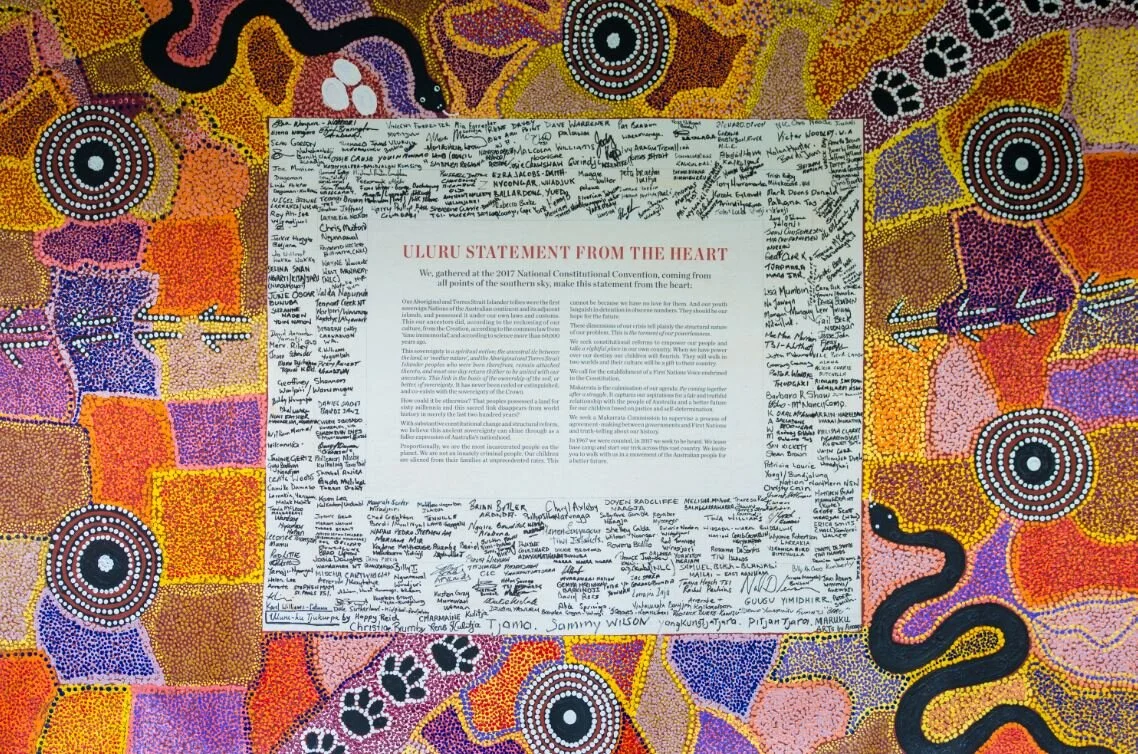COVID-19 is rapidly changing the world around us, and disability peak organisations in Australia have called on government to move quickly to guarantee continuity of essential services, support and information for people with disability, and to curb the risk of infection for people with disability and their support workers. People with disability are rightly worried about the particular risks this health crisis poses for them. This message from the Australian Federation of Disability Organisations, Children and Young People with Disability, Disability Advocacy Network Australia, First People Disability Network, Inclusion Australia, National Ethnic Disability Alliance, People with Disability Australia and Women with Disabilities Australia explains what needs to be done.
Read MoreIn today’s post, Dr Kathryn Snow methodically and clearly addresses some key questions about COVID-19. Dr Snow is a health services researcher and epidemiologist at the University of Melbourne and the Murdoch Children’s Research Institute, and collaborates with clinicians, health authorities, and qualitative researchers to improve health services for vulnerable groups. This post was originally published on her blog.
Read MoreLeading health and disability researchers in Australia are calling for urgent action from State and Federal governments to develop a targeted response to COVID-19 for people with disability, their families and the disability service sector. In this post originally published by Croakey, Professor Anne Kavanagh from the University of Melbourne and Associate Professor Gemma Carey from UNSW flag risks facing people with disability in this rapidly shifting environment and set out recommendations for government to mitigate those risks.
Read MoreWhen 60 Minutes aired a segment called ‘Does Australia really want to see the end of Down syndrome?’ in August 2017, its Facebook platform was flooded with negative comments about people with Down syndrome and their parents. Belinda Johnson and Dr Raelene West from RMIT University examined the online responses to the program and uncovered confronting views of Down syndrome as an economic burden, a medical burden and a social burden. As they worked their way through comments questioning the right of children with Down syndrome to access publicly funded disability services in light of advances in prenatal testing, for example, the authors began to question the extent to which derogatory and ill-informed comments that push people with disabilities into an exhausting and endless process of justifying their existence should be tolerated in the name of free speech. Their findings were recently published in the Journal of Sociology.
Read MoreSocial inclusion is a determinant of mental health and wellbeing. In today’s analysis, Autumn Pierce (@otonoenespanol) of Women’s Health East (@WHEast) shares highlights from their important new report The Unheard Story: The Impact of Gender on Social Inclusion for Older Women, which explores how inequalities accumulate across the lifespan to increase the risk and impacts of social exclusion for older women.
Read MoreIn the wake of International Women’s Day last Sunday, an annual United Nations day with a 2020 theme of ‘I am Generation Equality: Realising Women’s Rights’. Sarah Squire (@SquireSarah) of the Butterfly Foundation (@BFoundation) explores the role that diet culture and other sociocultural factors play in women and girls’ lives. Reflecting on some key challenges, she suggests policy levers and tips for improving women’s relationships with their bodies. This blog originally appeared on The Butterfly Foundation website.
Read MoreImplementation of the National Disability Insurance Scheme (NDIS) is the biggest reform to the disability sector since deinstitutionalisation. To the broader community it can be assumed that the NDIS will benefit all people with disabilities. In the week of International Women’s Day, Jen Hargrave (@Jen_Hargrave) of Women with Disabilities Victoria (WDVtweet) and University of Melbourne (@MSPHSC) and Maeve Kennedy (@mkennedy_vic) of Children and Young People with Disability Australia (@CDA39) look into the reform’s fitness to achieve gender equality now and for the next generation.
In this piece we discuss the NDIS’ capacity to provide women with greater choice and control, and a number of areas of equity and sustainability. We also examine the way the NDIS supports, or fails to support, women experiencing violence and consider the potential impact of broader gender equality measures on a market-based scheme.
Read MoreAs described in our piece on what the revocation of the Equal Remuneration Order may mean for Australia’s female-dominated community services sector, ongoing government funding is critical to maintain quality services. In today’s companion piece, Kathy McDermott of the National Foundation for Australian Women (@NFAW) describes the advocacy efforts of the sector and peak bodies with the Morrison Government on this issue, and calls for meaningful engagement.
Read MoreMuch of the gender pay gap can be explained by different pay scales in male- and female-dominated industries, which raises questions of how society values health, education and social services. In a landmark ruling, an Equal Remuneration Order (ERO) was granted to social and community service workers to legislate a much-needed pay rise across the sector. In today’s piece, Natasha Cortis of UNSW shares insight from research she conducted with Megan Blaxland on the role that government supplementation has played in ensuring the sector could maintain quality service while also implementing the award. More information can be found in their report: Challenges for Australia’s Community Sector: ERO Supplementation.
Read MoreIn order to truly represent Australia in all its diversity, we also need greater diversity in our politics. Evidence shows that increasing female representation has a very real impact on the legislation that is raised. In Australia, however, while the numbers of women in politics is slowly inching upward, many women have said that engaging in politics come at a cost seldom borne by their male counterparts: Consider, for example, Nova Peris’ recent comments on the racial abuse she endured, or the slander endured by Senator Sarah Hanson-Young.
For International Women’s Day, in today’s post Blair Williams (@BlairWilliams26) of Australian National University provides an overview of her research into the way women Prime Ministers are portrayed in the media, how that denigrates their authority and capability, and the negative impact it is having on increasing female political representation.
Read MoreFew people are aware of co-design’s political roots. The concept first emerged in Scandinavia in the 1970’s through union insistence that workers be included in the major restructuring of their industries as a way of “emancipating workers at the workplace” (p. 145). Central in its philosophy is the tenet to equalise power as a prerequisite for true collaboration. For International Women’s Day, Summer May Finlay (@SummerMayFinlay) of University of South Australia explains why the government has shown bad faith in failing to adopt the full recommendations from the Uluru Statement from the Heart. As long as full citizen rights are withheld from Aboriginal and Torres Strait Islanders, women’s rights will also fail to be achieved.
Read MoreWith the recent announcement by the Coalition Government to expand the use of the Cashless Debit Card (CDC) to more people on income support, it is continuing to be positioned as a positive intervention, providing people who need it most with a ‘financial literacy tool.’ With approximately 2.3 million people receiving some form of income support, there is currently great interest in how the Card, as well as other forms of cashless welfare, are experienced by those who have been subjected to these policies. Today’s important piece by researchers Zoe Staines (@Zoettes), Greg Marston, Philip Mendes, Shelley Bielefeld and Michelle Peterie (@MichPeterie) draw on their ground-breaking independent report into experiences and impacts of cashless welfare to explain how women and children are adversely affected.
Read MoreLast month, Labor announced a proposal to create a ‘wellbeing budget,’ similar to that introduced in New Zealand. While Josh Frydenberg found this a ‘laughable’ idea, there is nevertheless a logic that one of the wealthiest countries on Earth could do more to focus on those struggling at the margins. In today’s post, Dr Megan Weier (@MeganWeier) and Isabella Saunders (@Isabellasaund) share the logic for the newly-introduced Social Progress Index, which identifies and tests indicators that could be measured alongside GDP. You can explore more on the Social Progress Index, including accessing the full report.
Read MoreMy experiences as a ‘job seeker’ reinforce the view that jobactive should be shut down. I chose the jobactive provider because I had heard its senior managers boasting about the skills of their staff. To keep things fair, I told the workers I met about my knowledge of employment services and that I was taking notes of every appointment. These notes were so I could check what they told me to do was technically correct in relation to the guidelines and Social Security Act. Here’s a short account of what happened in the 4 months I was job seeker.
Read MoreThe accelerating pace of urbanisation globally has generated new anxieties about our relationship with and experience of cities. In this piece Jessica Pykett discusses how to start designing policy strategies for urban wellbeing.
Urban challenges such as traffic, air pollution, noise, stress, overcrowding, socio-economic inequalities, food insecurity, excessive waste, ill-health, exclusion, conflict, privatisation of space and impacts of extreme weather, biodiversity loss and the climate crisis are some of the many concerns which urban policy makers are asked to address. In 2018 at a summit of the World Health Organization’s European Healthy Cities Network in Copenhagen, Denmark, hundreds of Mayors committed to taking action on health, wellbeing and happiness in cities.
Read MoreThe Closing the Gap Report 2020 was released the week before last by the Prime Minister. He frankly admitted ‘The final target — closing the gap in life expectancy within a generation — is not on track to be met by 2031’. Then he went on ‘We may not be on track to fully close the life expectancy gap in a generation – always an ambitious target – but mortality rates have improved by almost 10 per cent. This is mostly because we’ve made progress in tackling the leading cause of death: the big circulatory diseases like heart disease and stroke. This is progress.’ In this piece, Richard Madden and John Gilroy of the University of Sydney analyse the implications of this report and the statements made.
Read MoreSuicide is a major challenge for public health. Approximately 800,000 people die by suicide every year worldwide; that is one every 40 seconds. The impact on those left behind is profound and long-lasting. It is estimated that for every death by suicide approximately 135 people are affected. In this post, Dr Maria Michail reflects on the importance of understanding the complexity of suicide and suicidal behaviour.
Read MoreToday marks the release of the second ACOSS and UNSW Poverty in Australia report, an important document to keep civil society and government accountable to those who are being left behind in one of the most prosperous countries on Earth. In today’s analysis, Policy Whisperer Susan Maury (@SusanMaury) of Good Shepherd Australia New Zealand (@GoodAdvocacy) provides a gendered analysis of the Poverty in Australia report.
Read MoreGerry Hamill from UK NGO First Time Inside helps new prisoners prepare for incarceration through ‘rehabilitation’. In this blog, Gerry reflects on the uses and abuses of people with ‘lived experience’ in the social service sector.
Read More




















